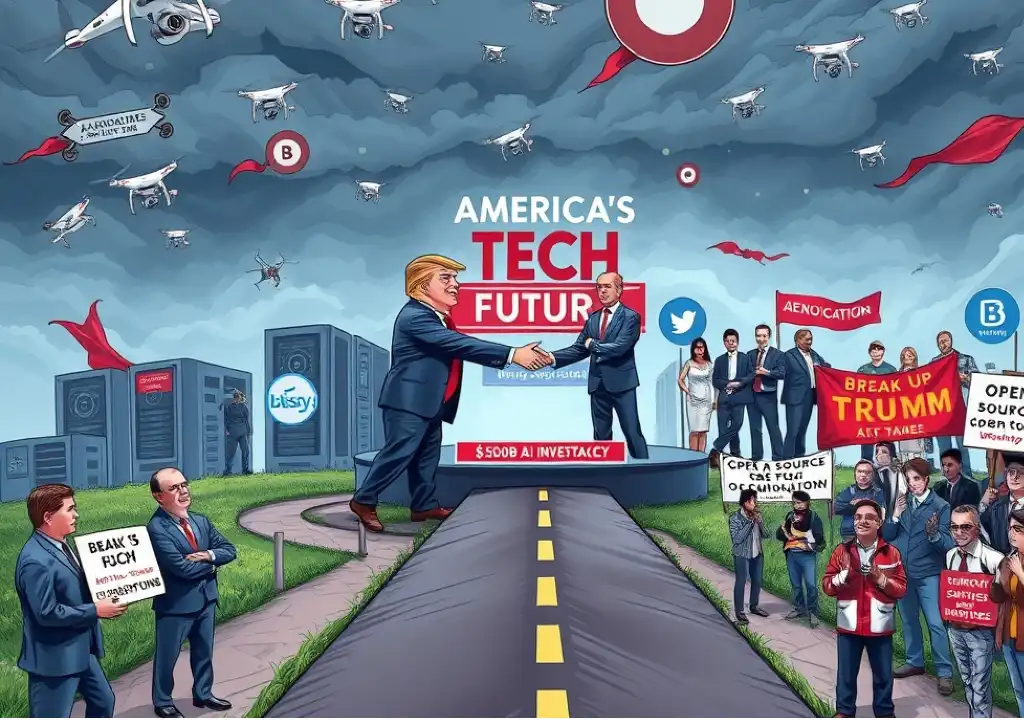President Donald Trump seems to be gaining traction with some of the biggest names in the tech industry. Elon Musk, Mark Zuckerberg, Jeff Bezos, and Google’s Sundar Pichai all showed up at his inauguration. Sam Altman, CEO of OpenAI, also voiced his support after Trump proposed a $500bn investment in AI.
This apparent alliance signals a political realignment. Though tech elites once appeared to favor Democrats, recent Democratic stances under President Biden — including antitrust efforts and criticism of billionaire power — may have driven a shift. Now, these executives seem drawn to a Republican offering deregulation, anti-union policies, big federal contracts, and tax breaks.
Fordham law professor Zephyr Teachout claims tech never truly sided with Democrats but has always followed political clout. “Tech leaders were never on our side. They follow influence,” she says. “In the Obama era, Google got deeply involved in the administration, giving the illusion they stood for Democratic values.”
A 2016 Intercept report showed that Google gave the Obama team advice, tech support, and even staff, revealing the depth of their ties. University of Colorado’s Nathan Schneider notes that business loyalty often shifts with power. Internal pushback from employees has also shaped executive decisions.
After Trump’s 2016 win, tech workers protested against government contracts and unethical partnerships. Musk’s Twitter buyout and rollbacks on workplace protections gave other leaders cover to follow suit. Trump’s resurgence furthers that anti-labor alignment.
Under Biden, tech workers pushed for union rights and greater corporate accountability. Musk, a vocal critic of unions, resisted such efforts. With Trump, executives expect fewer worker revolts and laxer rules from Washington.
Still, embracing Trump could backfire. He’s known for abandoning loyalists without hesitation. Stanford’s Mark Lemley cautions: “He’ll back you until you’re no longer useful. His loyalty is transactional.”
Trump’s pattern of firing close aides — from Bannon to Scaramucci — serves as a warning. Tech moguls should not expect lasting loyalty. His famous phrase “You’re fired” might soon apply to them as well.
Democrats’ Next Steps
With alliances shifting, Democrats must decide whether to keep pressing on reforming Big Tech or ease up to win their favor back.
Teachout urges Democrats to champion workers, local businesses, and grassroots communities — not powerful corporate middlemen. “Democrats should stand for small-d democracy, which doesn’t mesh with giant monopolies,” she says.
She insists they should pursue a bold plan to rein in tech giants, break up monopolies, and protect democracy, equity, and innovation from corporate overreach.
Schneider supports this but calls for a community-driven approach. Instead of top-down regulation, policies should empower users. That means mandating tech compatibility and funding public open-source systems, especially in AI.
Alternatives like Bluesky, built with transparency and user rights in mind, hint at how progressive tech circles might distance themselves from billionaire-led platforms.
Lemley adds that while Democrats won’t likely pass major laws under Republican control, they can still influence opinion. Public dissatisfaction with Big Tech is rising, giving Democrats an edge in the narrative war.
A January 24 AP-NORC survey showed most Americans disapprove of billionaire sway over policy — a sign the electorate is ready for change.
Whether the tech–Democrat split lasts is uncertain, but many Democrats appear ready. Algorithm-driven misinformation has hurt their campaigns — and newer ethical tech ventures may emerge as future allies.
Lemley concludes: “Eventually, startups may partner with Democrats on shared goals like science, immigration, and education. Trump’s vision doesn’t support sustainable innovation or U.S. competitiveness.”

